Understanding Oblique Drawing: Techniques, Examples, and Applications
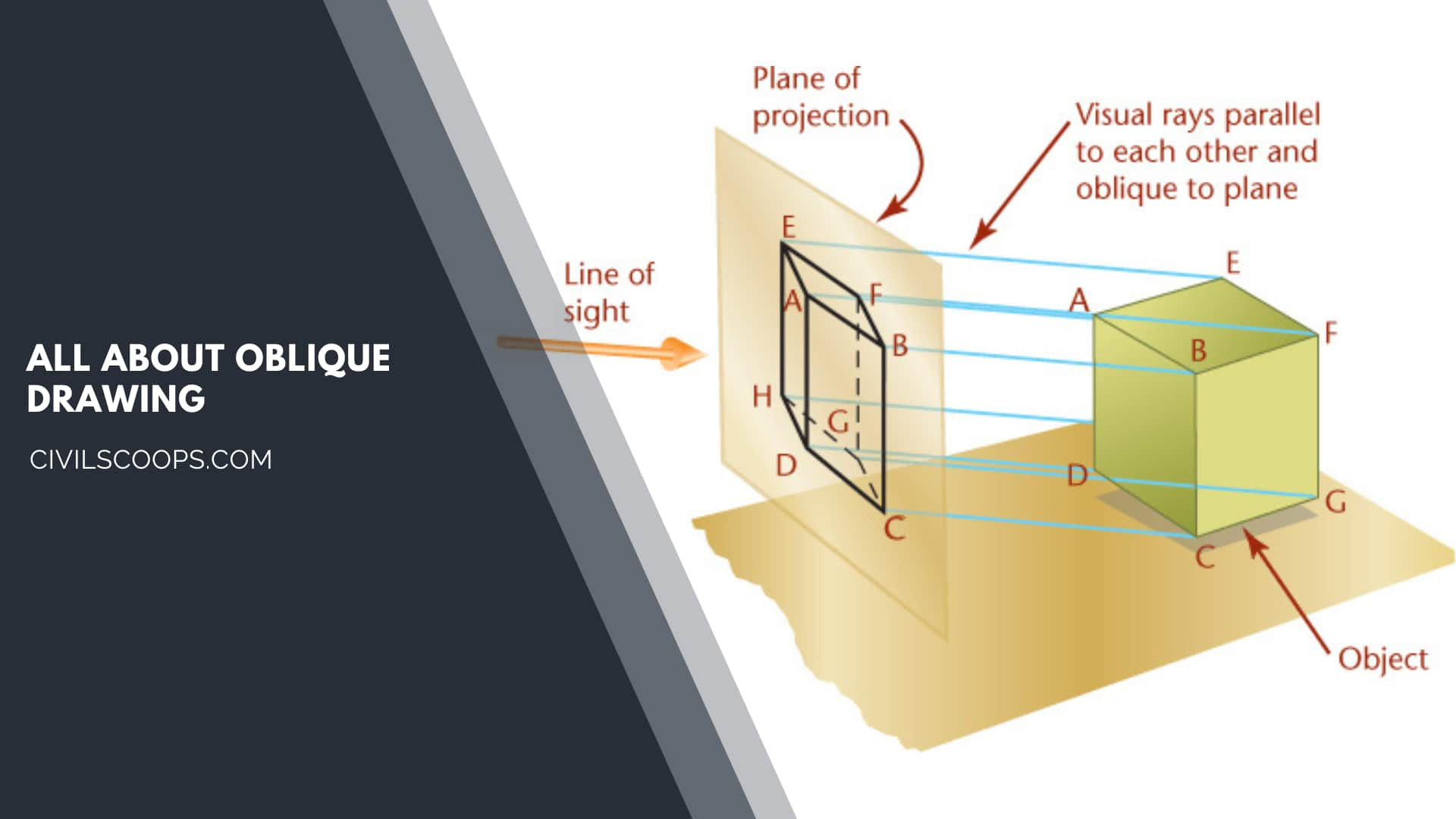
Table of Contents
What Is Oblique Drawing?
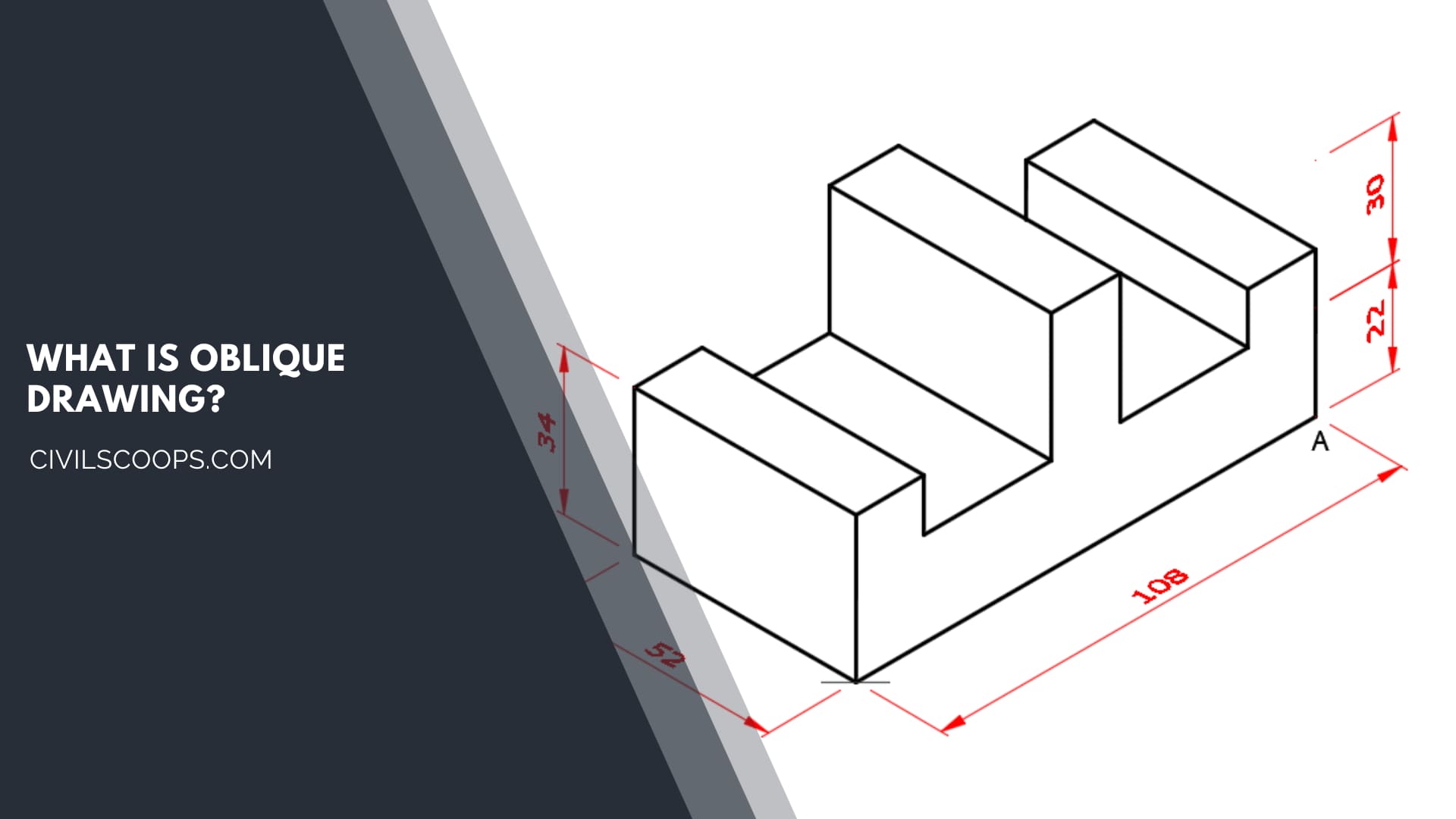
Oblique Drawing is a type of projective drawing in which the frontal lines are given in true proportions and relations and all others at suitable angles other than 90 degree without thinking about the rules of linear perspective.
Oblique Drawing is a pictorial representation of an object, in which the diagram is intended to depict the perspective of objects in three dimensions.
Oblique Drawing can be done either in a normal, cabinet, or cavalier style. In marketing departments while doing their business process to illustrate the product and its features, Oblique Drawing is generally used by them.
Now a days in our daily lives, we come across different three-dimensional objects such as football, cricket bats, etc.
With the help of Oblique Drawing we can easily draw any three-dimensional object in a two-dimensional plane like paper.
A cube is a three-dimensional object but when we draw the image of the cube on paper, it gives us a clear picture as to how a cube looks like.
The paper is in a two-dimensional plane but a three-dimensional solid like cube can be drawn on it. This way of drawing is known as Oblique Drawing.
Oblique Drawing Examples:
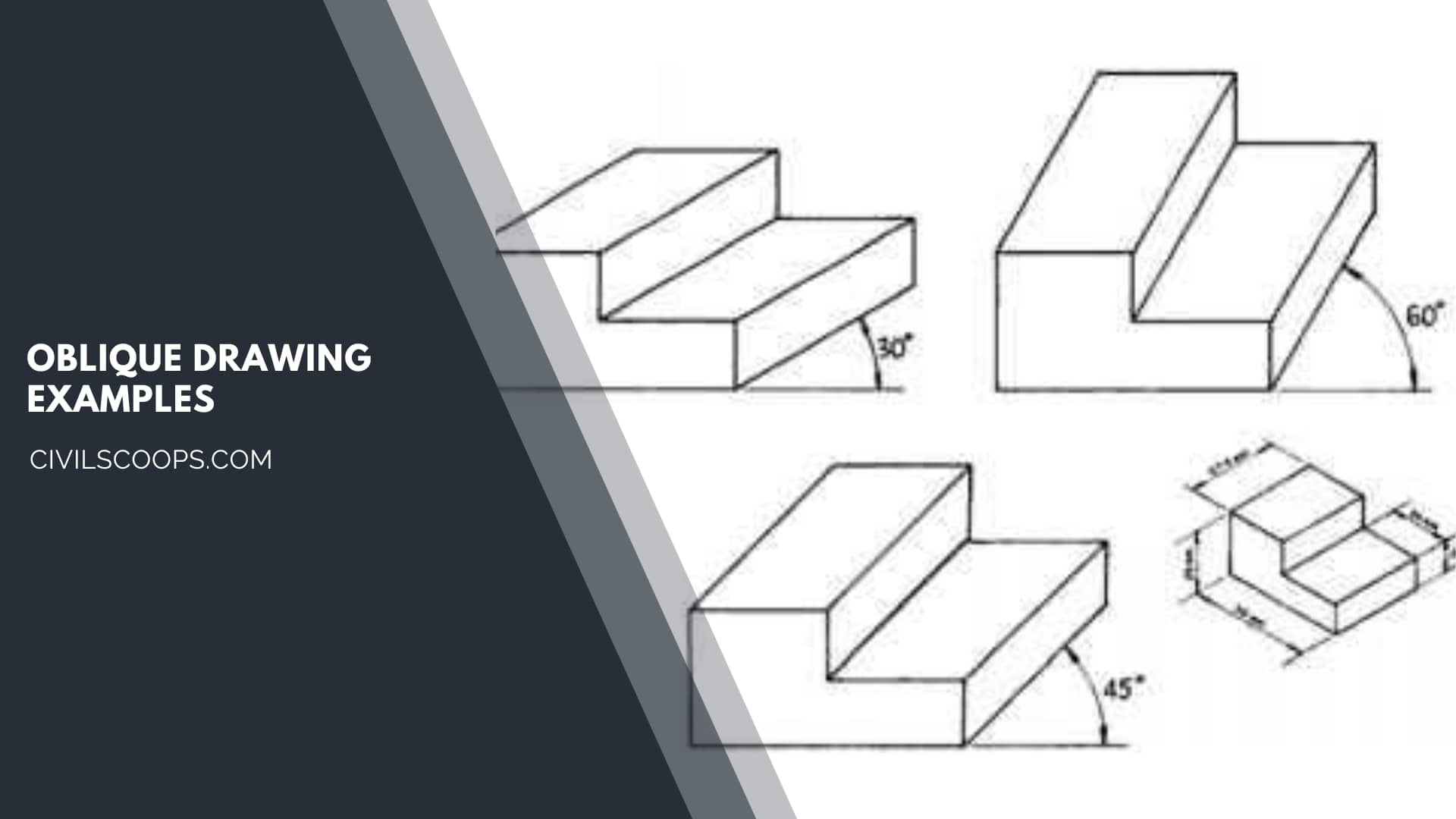
Step 1. Let’s make an Oblique Drawing of a cube of size 4 x 4 x 4 on a piece of paper.
Step 2. First draw the front face of the cube measuring 4 x 4.
Step 3. Then draw the back face of the cube measuring 4 x 4 a little further from the first cube, which will offset with respect to the front face.
Step 4. Then join the corresponding corners of the front face and back face of the cube.
Step 5. Then redraw the hidden edges as dotted lines. The hidden edges are the lines that cannot be seen from the front face of the cube.
Step 6. While drawing the whole process we must keep in mind that the size of the front and back end of the oblique drawing are the same and all the edges of a cube are equal in reality but the measurement is different in the drawing.
Also Read: Why Hairline Cracks in Concrete | Types of Cracks in Concrete
Useful Article for You
- What Is a Contour Interval
- What Is a Door Frame
- What Is Rafters
- What Is a Spandrel Beam
- What Is a Pony Wall
- What Is the Density of Sand
- What Is Modulus of Rupture
- What Is a Conceptual Drawing
- What Is a Slab in Construction
- What Is Skirting
- What Is Falsework in Construction
- What Is Mezzanine Level
- What Is Mortar Made Of
- What Is Plywood
- What Is Undercoat
- What Is Cbr
- What Is a Benchmark in Surveying
- What Is Pier and Beam Foundation
- What Is Workability
- What Is a Flyover Bridge
What Is Oblique View?
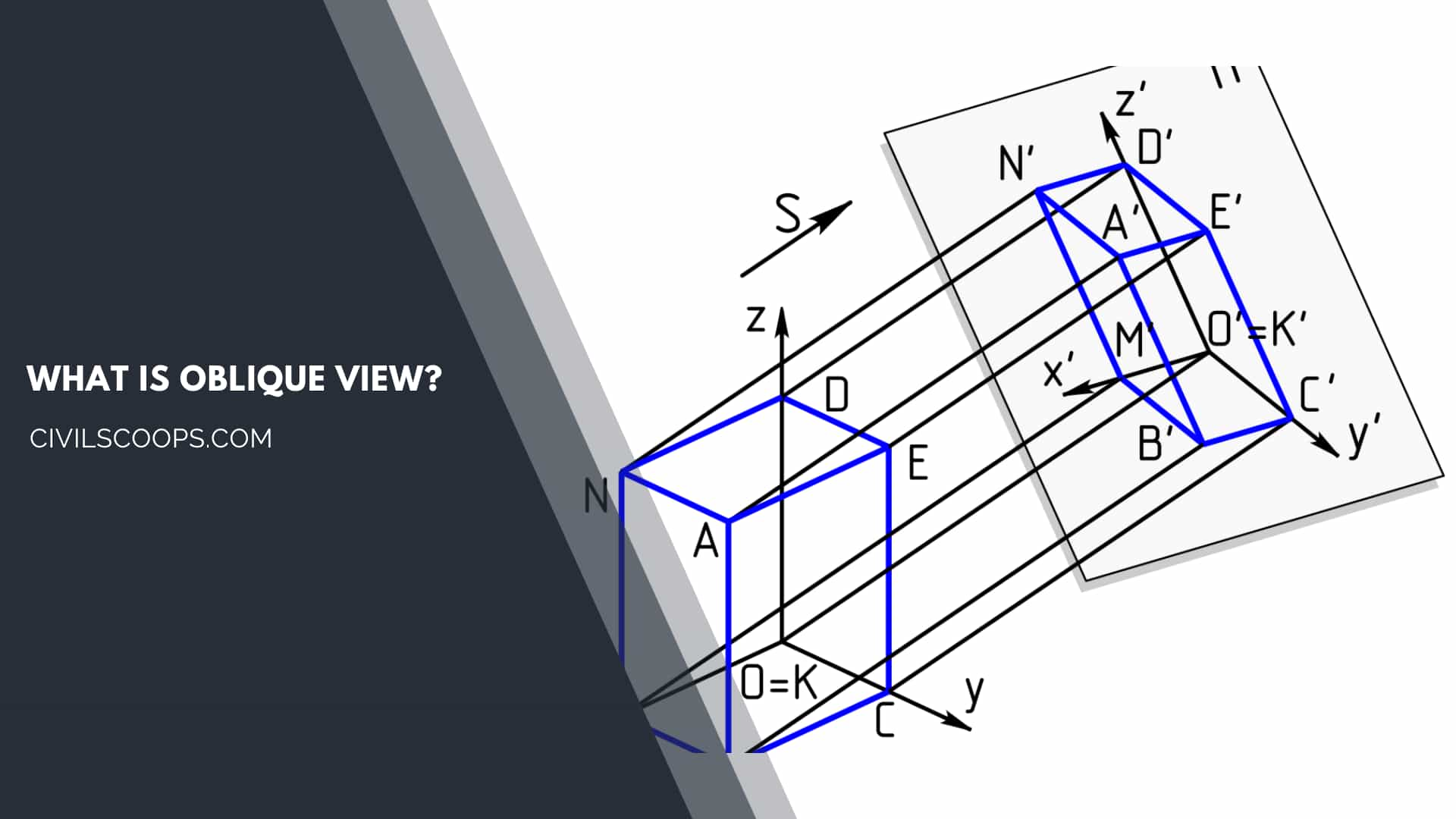
An oblique view is a pictorial view of an object that shows its elevation, plan, or a section which can be used to scale with parallel lines projected from the corners, that is at 45 degrees or any other angle, which indicates the other sides.
Oblique Projection:
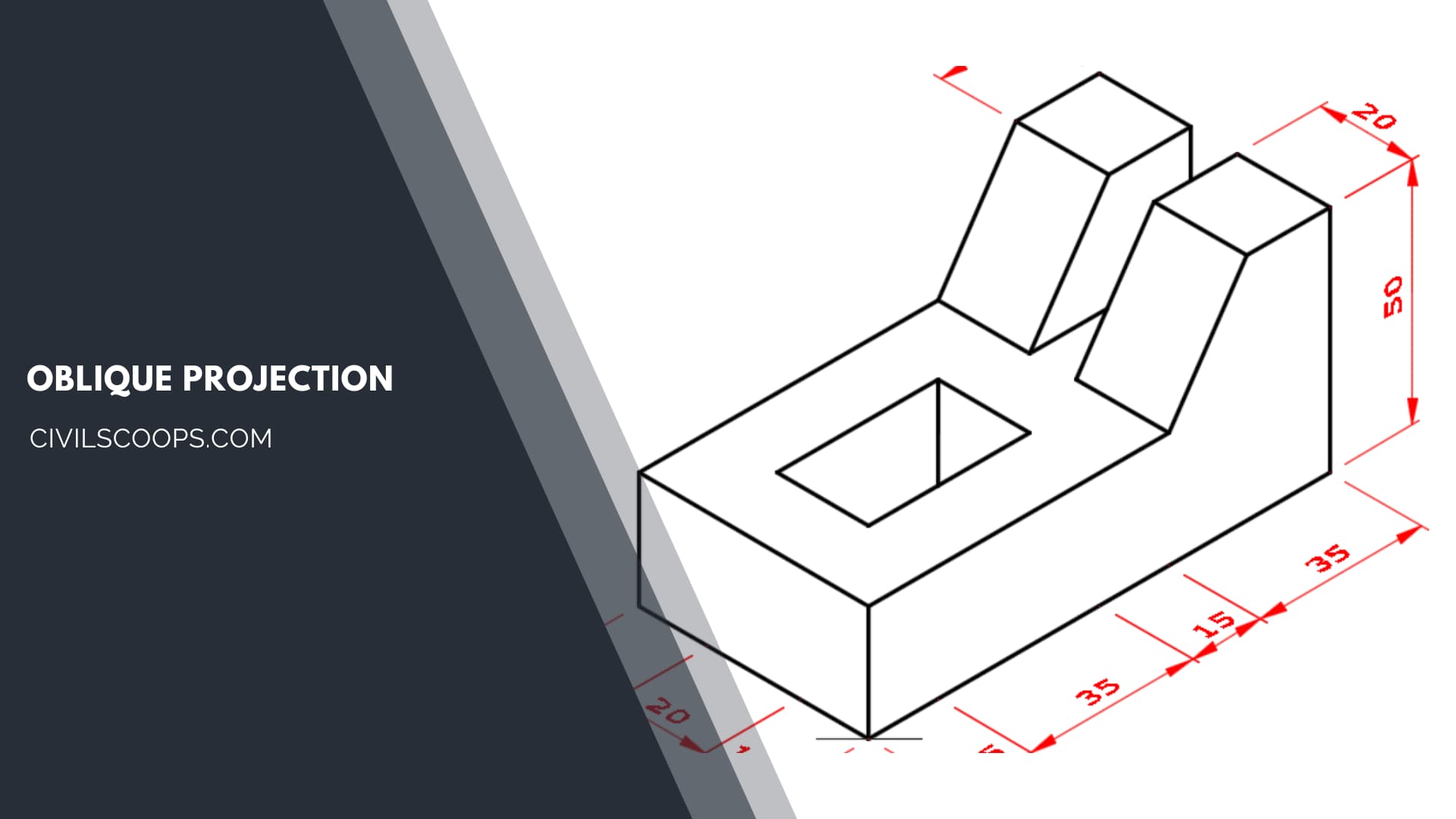
Oblique Projection is a type of technical drawing that is used for drawing graphical projections of three-dimensional objects on two-dimensional planes. The most common technique used for technical drawing is Oblique Projection.
From the first or second century to 18th-century Oblique Projection was used almost universally by Chinese artists for depicting rectilinear objects such as houses.
Oblique Shape:

When an object in geometry is distorted so that it seems to lean over at an angle or as opposed to being exactly upright is said to have an oblique shape.
Oblique Shape is referred to a shape, either plane or space, that has either an acute angle or an obtuse angle.
Oblique Shape is shaped that has an oblique angle that is they have acute angles (angles that are between 0 degree to 90 degree) or obtuse angle (angles that are between 90 degree to 180 degree).
In an Oblique Shape the side that forms the angles are never perpendicular, if told in simple terms these sides will never meet.
Also Read: How to Reduce Construction Cost (Tips)
Cabinet Oblique:
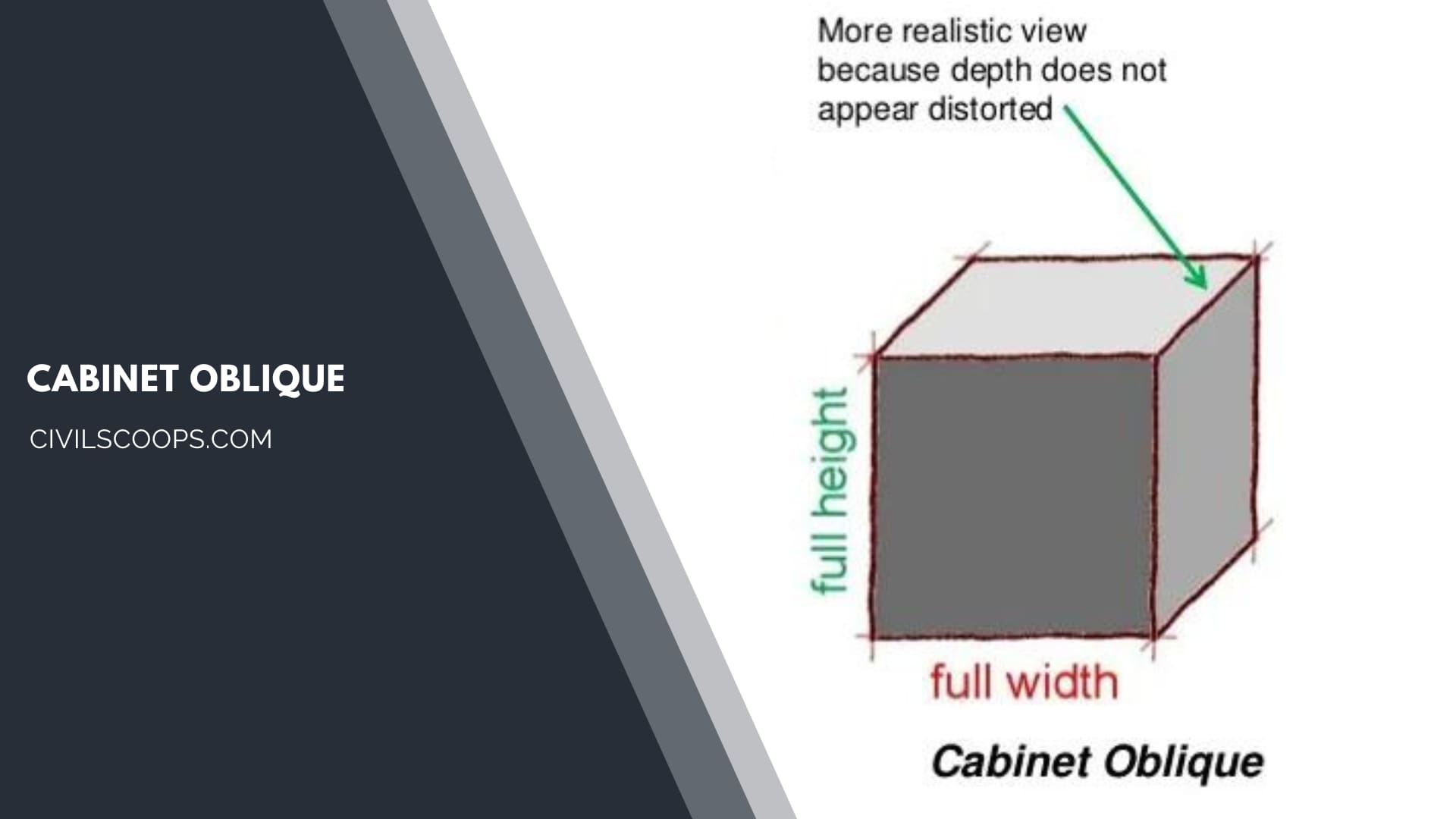
- Cabinet Oblique is popularly used in furniture illustration, where the receding axis is scaled to half the size of the original object.
- Cabinet Oblique is also sometimes called cabinet perspective is a type of oblique projection.
- In Cabinet Oblique one face of the projected object is parallel o the viewing plane, and the third axis is projected as going off at an angle between 30 degree to 45 degree.
- In Cabinet Oblique projections the receding lines are shortened by half of their true length to compensate for distortion and to approximate more closely what the human eye would see. Cabinet Oblique is the most used form of oblique drawing due to this reason.
What Is Cavalier Drawing?
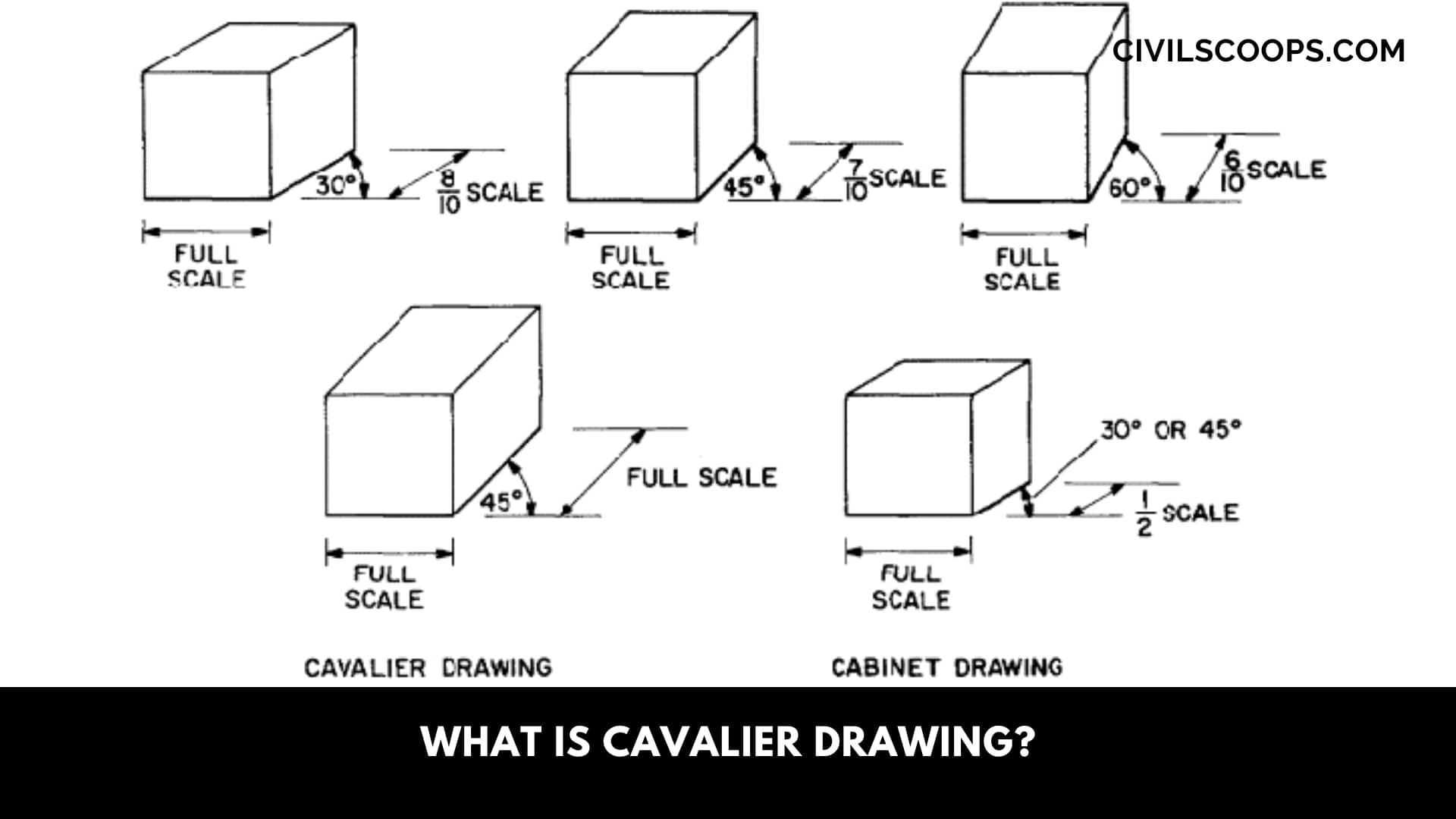
In cavalier drawing all lines including receding lines and the three-axis lines are made to their true length which means that if an object is shown is 4 cm deep then while drawing that object with a cavalier method we have to draw the object 4 cm deep.
Cavalier drawing is mostly used for drawing of oblique projection construction. In a cavalier drawing one axis is horizontal, the second axis is vertical, and the third axis is at 45 degree to the horizontal line.
Cavalier drawing resembles very closely the actual image.
Useful Article for You
- What Is a Highway Flyover
- What Is Grouting
- What Is a Pile Cap
- What Is a Bond Beam in Masonry
- What Is the Standard Size of a Door Frame
- What Is Sapwood
- What Is Crane
- What Is a Gable
- What Is Superelevation
- What Is Kerb
- What Is the Purpose of Washers
- What Is the Size of a Brick in Inches
- What Is Reinforced Masonry
- What Is Countertop Height
- What Is Bond Breaker
- What Is Plasticizer in Concrete
- What Is Luminous Flux Vs Lumens
- What Is Linear Distance
- What Is a Fire Escape
- What Is Lumber Used for
Cavalier Projection:
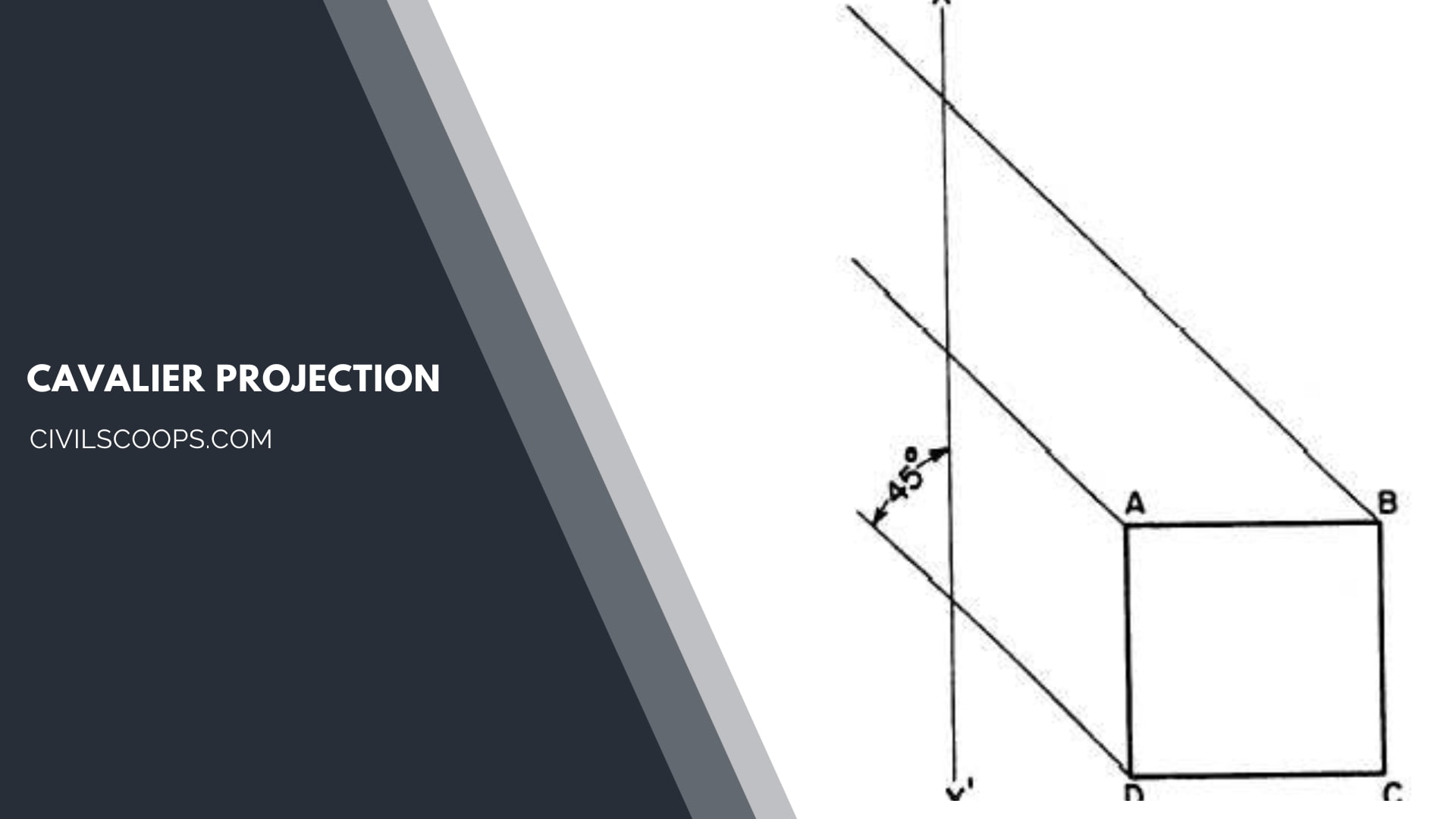
Cavalier Projection is sometimes called cavalier perspective or high viewpoint.
Cavalier Projection is a technique of drawing where a point of the object is represented by three coordinates, are x, y, and z. Normally while drawing Cavalier Projection is represented by only two coordinates, that is ‘x’ and ‘y’.
When we are using Cavalier Projection for flat drawing, the two main axes ‘x‘ and ‘z’ on the figures that we draw are perpendicular to each other and the length on this two-axis are drawn in a 1:1 scale.
This step is quite similar to the diametric projections, although it is not similar to axonometric projection, as the third axis, that is ‘y’ axis is drawn in diagonal making an arbitrary angle of 30 degree or 45 degree with the ‘x’ axis.
The drawn length of the third axis, which is ‘y’ axis, is not scaled.
When a figure must be drawn by hand like with pen and paper or on a blackboard, Cavalier Projection is used as it is very easy to draw and the drawing is very similar to the actual image.
Also Read: Introduction to Stair Landing | What Is Stair Landing | Stair Landing Dimensions
Cavalier View:
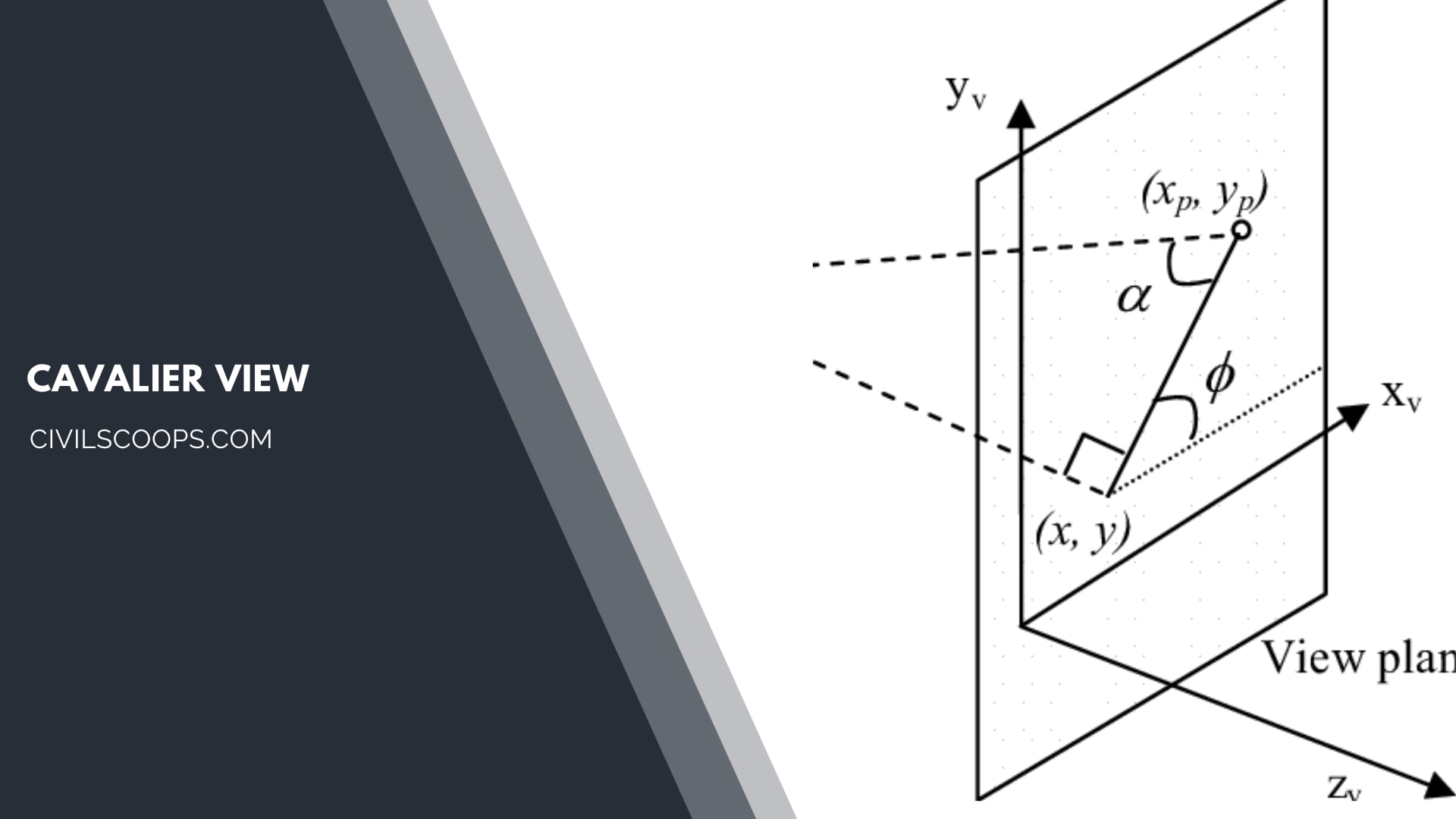
Cavalier View or cavalier perspective is the way we see an object when that object is seen from a high point.
In Cavalier View the lines of projection are at a 45 degree angle to the plane of projection.
[su_box title=”FAQ” style=”default” box_color=”#333333″ title_color=”#FFFFFF” radius=”3″ class=”” id=””]
What Is Oblique Drawing?
Oblique projection is a simple type of technical drawing of graphical projection used for producing two-dimensional images of three-dimensional objects.
Oblique Drawing Examples
Procedure for Oblique Sketching – Example
An oblique sketch can be defined as a diagram intended to portray the perspective of an object in three dimensions. Let us try to draw an oblique sketch of a 4 × 4 × 4 cube on a paper. 3. Sketch the back face which is offset with respect to the front face.
What Is Oblique View?
An oblique view is another type of parallel projection, where the object is shown from a 45-degree angle to the horizontal plane. The front face of the object is drawn in its true shape and size, while the other faces are projected at an angle, usually 30 or 45 degrees.
What Is Oblique Projection?
Oblique projection is a type of parallel projection: it projects an image by intersecting parallel rays (projectors) from the three-dimensional source object with the drawing surface (projection plane).
What Is Oblique Shape?
Oblique Shapes. When someone talks about oblique shapes, they refer to a shape, either plane or space, that has either an acute or obtuse (an oblique) angle. You can figure out if two planes are oblique or not by looking at the angle they create when they intersect.
What Is Cabinet Oblique?
Cabinet oblique projection is another method to draw in 3D, mostly suited for cabinets and furniture drawings. In cabinet oblique drawing, we take a front face of an object, and draw the sides, or depths, in 45 degrees.
What Is Cavalier Drawing?
an oblique projection with lines of projection at a 45° angle to the plane of projection.
Types of Oblique Projection
Two commonly used oblique projections are the cavalier and cabinet projections. The cavalier projection preserves the lengths of lines that are perpendicular or parallel to the projection plane, with lines of sight at θ = ϕ = 45 degrees.
Cavalier Drawing
Cavalier Oblique Drawing: Mostly this type of drawing is constructed in Oblique Projection. In this drawing, one axis is horizontal, and the other is vertical while the third axis is at 45° to the horizontal line.
Kinds of Oblique Drawing
There are two types of oblique drawings. These are: Cabinet projection. Cavalier projection.
Oblique Circle Drawing
oblique circle (plural oblique circles) (projection) a circle whose plane is oblique to the axis of the primitive plane.
Difference Between Isometric and Oblique Drawing
An oblique sketch has a more focus on the front side of an object or the face. Isometric Sketch focuses on the edge of an object. It is drawn usually using the 45-degrees angle to render the third dimensions. It is usually drawn using 30 degrees angles.
Advantages of Oblique Projection
One of the main advantages of oblique view is that it shows the true shape and size of the front face of the object, which can be important for showing dimensions or specifications. It also allows you to see the depth and orientation of the object, which can be helpful for showing how it fits or functions in a system.
What Is Oblique Pictorial Drawing?
Oblique Pictorials. An Oblique pictorial starts with a straight-on view of one of the object’s faces, which is often the front face. Angled, parallel lines are drawn to one side to represent the object’s depth. The most common oblique angle is 45°. But 30°and 60° is used also.
Pictorial Drawing Examples
There are three types of pictorial views:
- perspective.
- isometric.
- oblique.
Types of Pictorial Drawing
There are many types of pictorial drawings and these include isometric, oblique, axonometric and planometrics and the four drawings figures 164 – 167 illustrate the differences between them. Of these, isometric drawings are the most common.
What Is Cavalier Oblique Drawing?
The cavalier perspective, also called cavalier projection or high view point, is a way to represent a three-dimensional object on a flat drawing, and more specifically, a type of oblique projection.
[/su_box]
[su_note note_color=”#F2F2F2 ” text_color=”#333333″ radius=”3″ class=”” id=””]
Like this post? Share it with your friends!
Suggested Read –
- What Is a Cavity Wall
- Repairing a Burst Pipe
- All About No Hot Water in The House
- How to Get Wet Blood Out of Carpet?
- What Is the Best Foundation for a House
[/su_note]
Originally posted 2023-09-23 12:06:50.
